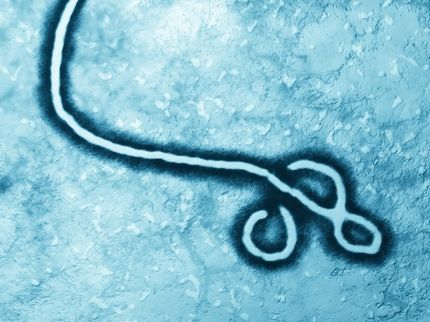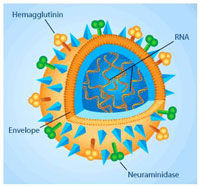New virus isolated from patients with severe brain infections
Researchers have identified a new virus in patients with severe brain infections in Vietnam. Further research is needed to determine whether the virus is responsible for the symptoms of disease.
The virus was found in a total of 28 out of 644 patients with severe brain infections in the study, corresponding to around 4%, but not in any of the 122 patients with non-infectious brain disorders that were tested.
Infections of the brain and central nervous system are often fatal and patients who do survive, often young children and young adults, are left severely disabled. Brain infections can be caused by a range of bacterial, parasitic, fungal and viral agents, however, doctors fail to find the cause of the infection in more than half of cases despite extensive diagnostic efforts. Not knowing the causes of these brain infections makes public health and treatment interventions impossible.
Researchers at the Oxford University Clinical Research Unit, Wellcome Trust South East Asia Major Overseas Programme and the Academic Medical Center, University of Amsterdam identified the virus, tentatively named CyCV-VN, in the fluid around the brain of two patients with brain infections of unknown cause. The virus was subsequently detected in an additional 26 out of 642 patients with brain infections of known and unknown causes.
Using next-generation gene sequencing techniques, the team sequenced the entire genetic material of the virus, confirming that it represents a new species that has not been isolated before. They found that it belongs to a family of viruses called the Circoviridae, which have previously only been associated with disease in animals, including birds and pigs.
Dr Rogier van Doorn, Head of Emerging Infections at the Wellcome Trust Vietnam Research Programme and Oxford University Clinical Research Unit Hospital for Tropical Diseases in Vietnam, explains: "We don't yet know whether this virus is responsible for causing the serious brain infections we see in these patients, but finding an infectious agent like this in a normally sterile environment like the fluid around the brain is extremely important. We need to understand the potential threat of this virus to human and animal health."
The researchers were not able to detect CyCV-VN in blood samples from the patients but it was present in 8 out of 188 fecal samples from healthy children. The virus was also detected in more than half of fecal samples from chickens and pigs taken from the local area of one of the patients from whom the virus was initially isolated, which may suggest an animal source of infection.
Dr Le Van Tan, Oxford University Clinical Research Unit, Wellcome Trust Major Overseas Programme, said: "The evidence so far seems to suggest that CyCV-VN may have crossed into humans from animals, another example of a potential zoonotic infection. However, detecting the virus in human samples is not in itself sufficient evidence to prove that the virus is causing disease, particularly since the virus could also be detected in patients with other known viral or bacterial causes of brain infection. While detection of this virus in the fluid around the brain is certainly remarkable, it could still be that it doesn't cause any harm. Clearly we need to do more work to understand the role this virus may play in these severe infections."
The researchers are currently trying to grow the virus in the laboratory using cell culture techniques in order to develop a blood assay to test for antibody responses in patient samples, which would indicate that the patients had mounted an immune response against the virus. Such a test could also be used to study how many people in the population have been exposed to CyCV-VN without showing symptoms of disease.
The team are collaborating with scientists across South East Asia and in the Netherlands to determine whether CyCV-VN can be detected in patient samples from other countries and better understand its geographical distribution.
Professor Menno de Jong, head of the Department of Medical Microbiology of the Academic Medical Centre in Amsterdam said: "Our research shows the importance of continuing efforts to find novel causes of important infectious diseases and the strength of current technology in aid of these efforts."




















































